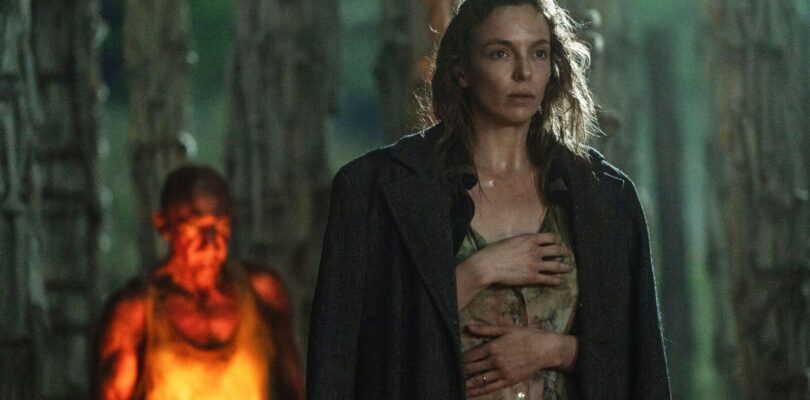Danny Boyle’s 2002 film 28 Days Later is widely considered one of the most influential entries in the zombie genre. By stripping out the supernatural and replacing it with a scientifically plausible viral outbreak, Boyle gave the genre a visceral realism. Now, in 28 Years Later (2025), Boyle reengages the genre with his trademark jittery digital aesthetic, matched by Alex Garland’s bleak yet poetic screenplay. (28 Weeks Later, the 2007 sequel was directed by Juan Carlos Fresnadillo, but this new instalment brings the original team back into play.)
28 Years Later isn’t just a sequel; it’s a resurrection—a smart, stylish, and often brutal return to a world that reshaped zombie cinema back in 2002. The post-apocalyptic UK remains in indefinite quarantine, its landscape overrun by the infected. Small uninfected communities survive in isolation. One such pocket is a tiny island off the coast of Scotland, cut off from the mainland and clinging to normalcy. Garland’s script focuses on one family: Jamie (Aaron Taylor-Johnson), his ailing wife Isla (Jodie Comer), and their 12-year-old son Spike (Alfie Williams).
The story balances the lives of these isolated survivors and the shifting nature of the virus itself, while also functioning as a coming-of-age tale for a boy forced to grow up too soon. His drive to save his mother becomes the emotional core of the film.
Visually, Boyle embraces a lusher, more cinematic palette. Frequent collaborator Anthony Dod Mantle paints the screen with steely blues, greys, mossy greens, and sudden shocks of red. It’s a haunted landscape—vast fields where clusters of daisies offer fleeting distraction from the horrors lurking in ruins and undergrowth.
The score, composed by Scottish hip-hop trio Young Fathers, mixes established tracks with original compositions. But the standout is Boyle’s integration of Rudyard Kipling’s Boots, narrated by Taylor Holmes. Its militaristic cadence becomes a chilling refrain, layered over disjointed visuals of past and present—suggestive of the violence ahead.
Boyle’s kinetic energy remains—dynamic camera work, sudden edits, sharp violence. A standout scene set in an abandoned train carriage, abandoned homes with horrors within are very effective but the tonal shifts—from tender family moments to brutal carnage—can be jarring. Much of the horror lies not in gore (though there’s plenty), but in implication: the off-screen scream, the aftermath silence, the look of a survivor who’s run out of hope.
Alfie Williams is remarkable as Spike: cautious, haunted, never overplaying the role. Comer brings raw depth to Isla, a mother trapped by illness and love. Taylor-Johnson lends Jamie a quiet intensity—caring but ethically conflicted. Ralph Fiennes makes a memorably unsettling appearance as Dr. Kelson. There’s a cheeky cameo and teaser at the end of the film that perhaps links to 28 Years Later: The Bone Temple, a follow-up film due out in early 2026.
28 Years Later is more than a return to form. It’s a filmmaker using genre not just to thrill but to reflect.




